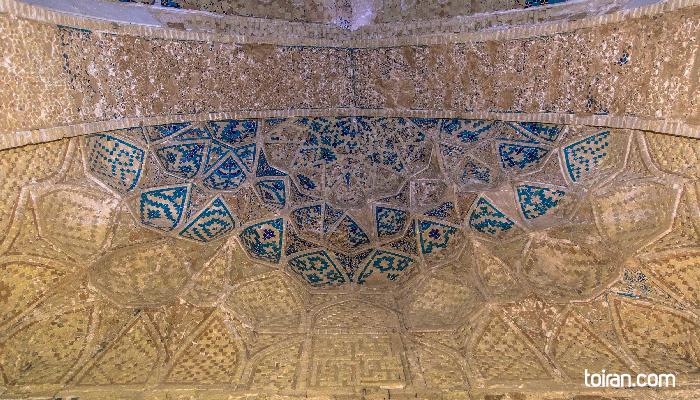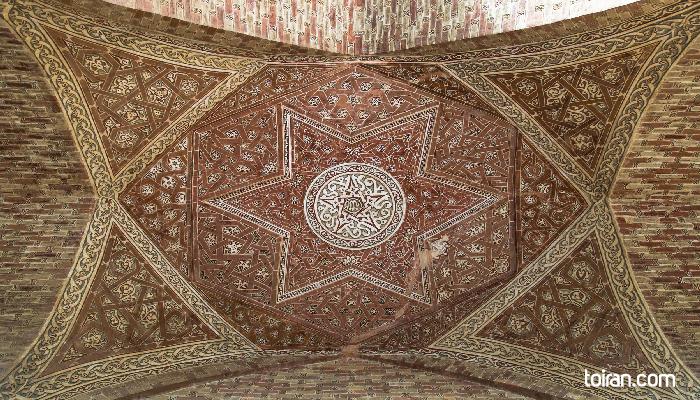Built on the order of the eighth Ilkhanid ruler Oljeitu, also known as Muhammad Khodabandeh (1280 – 1316), Soltaniyeh was the third Ilkhanid capital after Maragheh and Tabriz. Soltaniyeh was the place Ilkhanid rulers went to hunt and to relax. Muhammad Khodabandeh is said to have built the Soltaniyeh Dome to become the first Shia Imam Ali (PBUH)’s (599-661) new shrine. After encountering fierce opposition from the Scholars of Najaf who were furious at the Ilkhanid ruler for wanting to move Imam Ali’s remains, Muhammad Khodabandeh abandoned his plan and Soltaniyeh Dome eventually became his own mausoleum.
Soltaniyeh Dome is the third tallest dome in the world after Santa Maria delle Grazie in Italy and Hagia Sophia in Turkey. The dome of Soltaniyeh is 25.5 meters in diameter at its base and 48.5 meters tall. After a lengthy process, the tilework of this dome was successfully renovated in 2008.
Soltaniyeh Dome is a three-story structure with an octagonal plan and 110 steps. The structure has eight doors, eight, iwans (a vaulted hall, walled on three sides and open on one side) and eight minarets. It consists of three parts: a dome chamber, a chamber called Torbat Khaneh and a basement.
Torbat Khaneh is located on the southern side of the structure and is a 17-meter long and 8-meter wide room with a 16-meter ceiling. As dirt (Torbat) from the grave of the third Shia Imam, Hossein (PBUH) (626-680), has been used to inscribe the walls of the Mihrab (prayer niche) of this room it has come to be known as Torbat Khaneh. The walls of Torbat Khaneh bear Quranic verses in Kufic and Thuluth calligraphy hands. The basement is located directly under Torbat Khaneh
All of Soltaniyeh Dome’s walls are covered in inscriptions ranging from Quranic verses and the names of Allah to the names of the Prophet (PBUH) and the Imams.
The decorations of Soltaniyeh belong to two distinct periods. In the first period, the dome was decorated with brickwork and tiles. Decorations from the second period consist of stucco reliefs and painting on stucco which have mostly covered the decorations from the first period.
Many years ago, Soltaniyeh Dome along with its nearby buildings and the royal palace were encircled by a stone wall with 16 watchtowers. This wall has since then been dismantled.
Today a small museum has been opened near the main entrance of the Soltaniyeh Dome where pictures and items from the past periods of Soltaniyeh are on display.
Soltaniyeh Dome was registered as a National Heritage Site in 1931. The Dome was registered as a UNESCO World Heritage Site in 2005.






